VANCO Landscape Engraved Silver Fountain Pen c. 1930s
by Jim Mamoulides, September 1, 2023
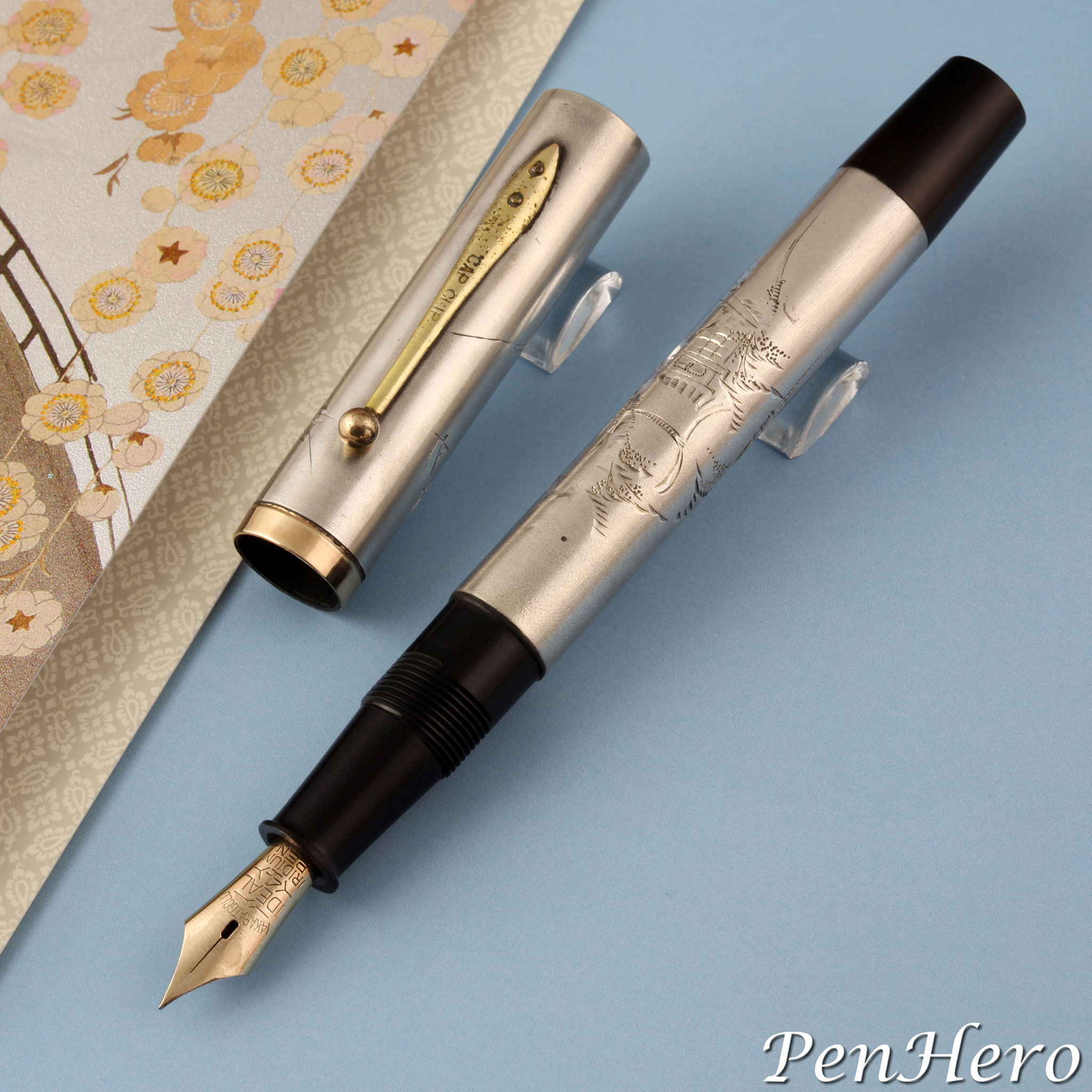 VANCO landscape engraved silver fountain pen c. 1930s
VANCO landscape engraved silver fountain pen c. 1930s
Beautiful Artwork for Your Pocket
This is a c. 1930s sterling silver eye dropper fountain pen with a hand engraved Japanese landscape on the cap and barrel. The cap top is stamped with a VANCO trade mark, a V inside a diamond next to SILVER. The gold plated cap band and clip have no hallmark. It’s 5 3/16 inches long and has a semi flex gold nib stamped 14 KARAT GOLD over IDEAL over 4 over IRIDIUM over PEN. As it does not have a JIS mark, the nib pre-dates 1954.
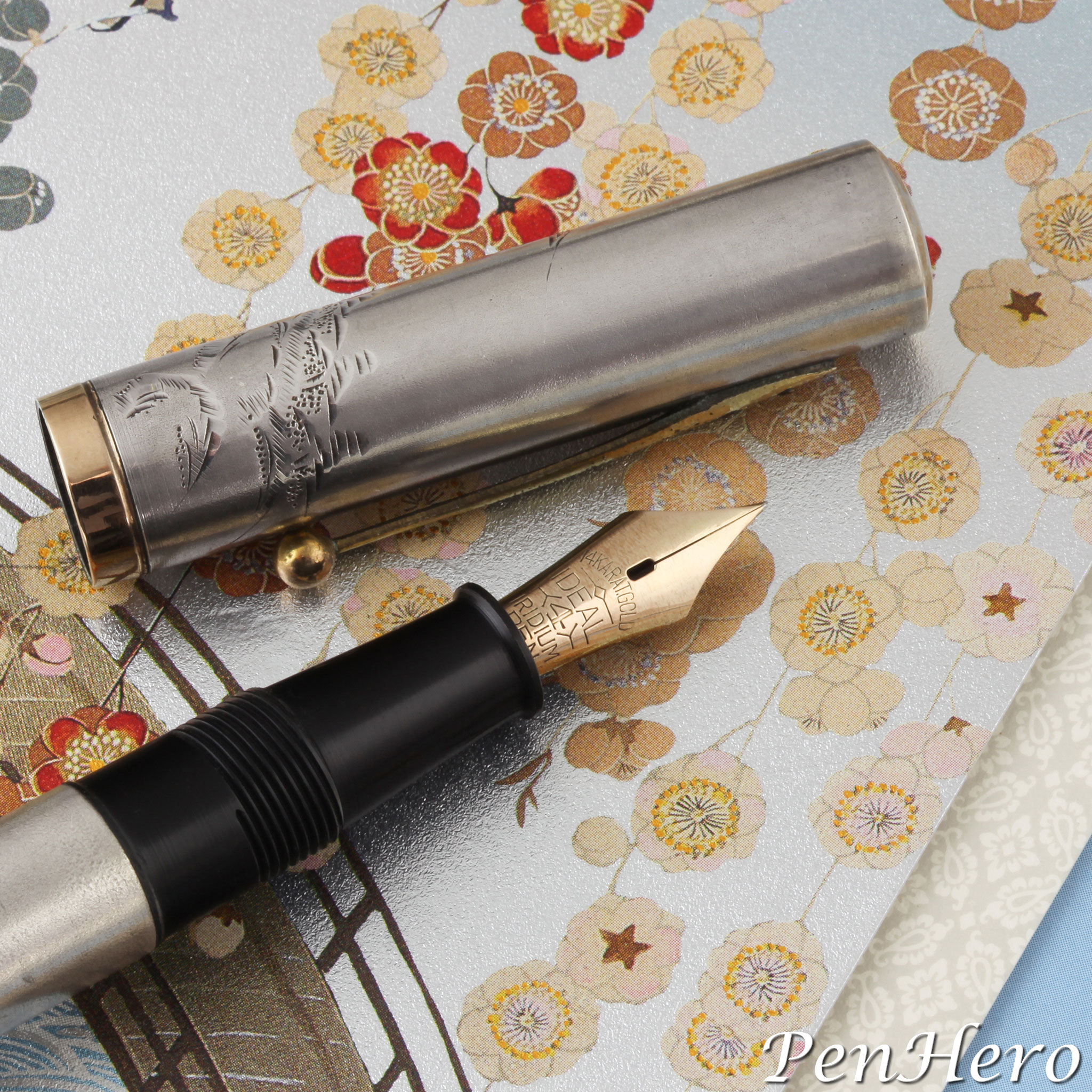 VANCO landscape engraved silver fountain pen - nib detail
VANCO landscape engraved silver fountain pen - nib detail
The landscape engraving, signed by the artist Ikkou, is one continuous design from the cap through the barrel. Mount Fuji appears on the side of the cap opposite the clip and below is a scene of foothills, trees and a sailboat, implying a large lake, right down to the cap band. The scene on the barrel is a long view of a house in a hilly scene with trees, tall grasses and a walk path. The artist’s signature appears at the bottom of the walk path on the barrel where it meets the hard rubber end cap. The silver is finished with an acid treatment to give it a matte finish.
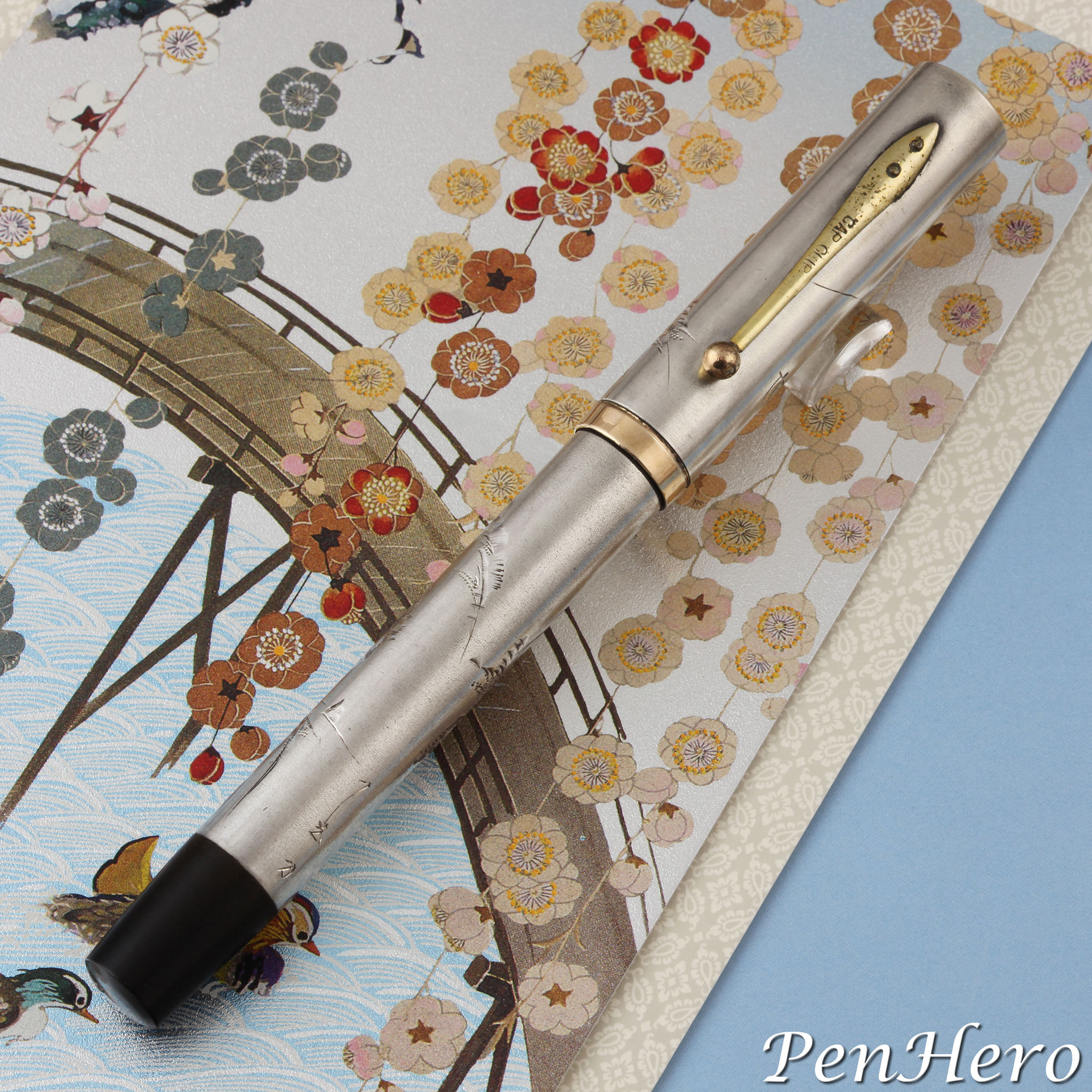 VANCO landscape engraved silver fountain pen c. 1930s
VANCO landscape engraved silver fountain pen c. 1930s
Who is VANCO?
Information on pen maker VANCO is sparse. The company was large enough to register in market share reports, but not as large as the top five companies of that period. Vanco was based in Osaka, Japan’s second largest city. Before World War II Osaka had hundreds of small shop pen makers, most of whom made their own caps and barrels and purchased the rest of the pen parts from specialty parts houses. This explains why so many pen parts from that era have generic stampings, like the “CAP CLIP” on this pen. VANCO and the Shobido Silver Store in Osaka were both owned by members of the Eto family, a relationship that may be a factor in several similar pens that do not have VANCO maker's marks.
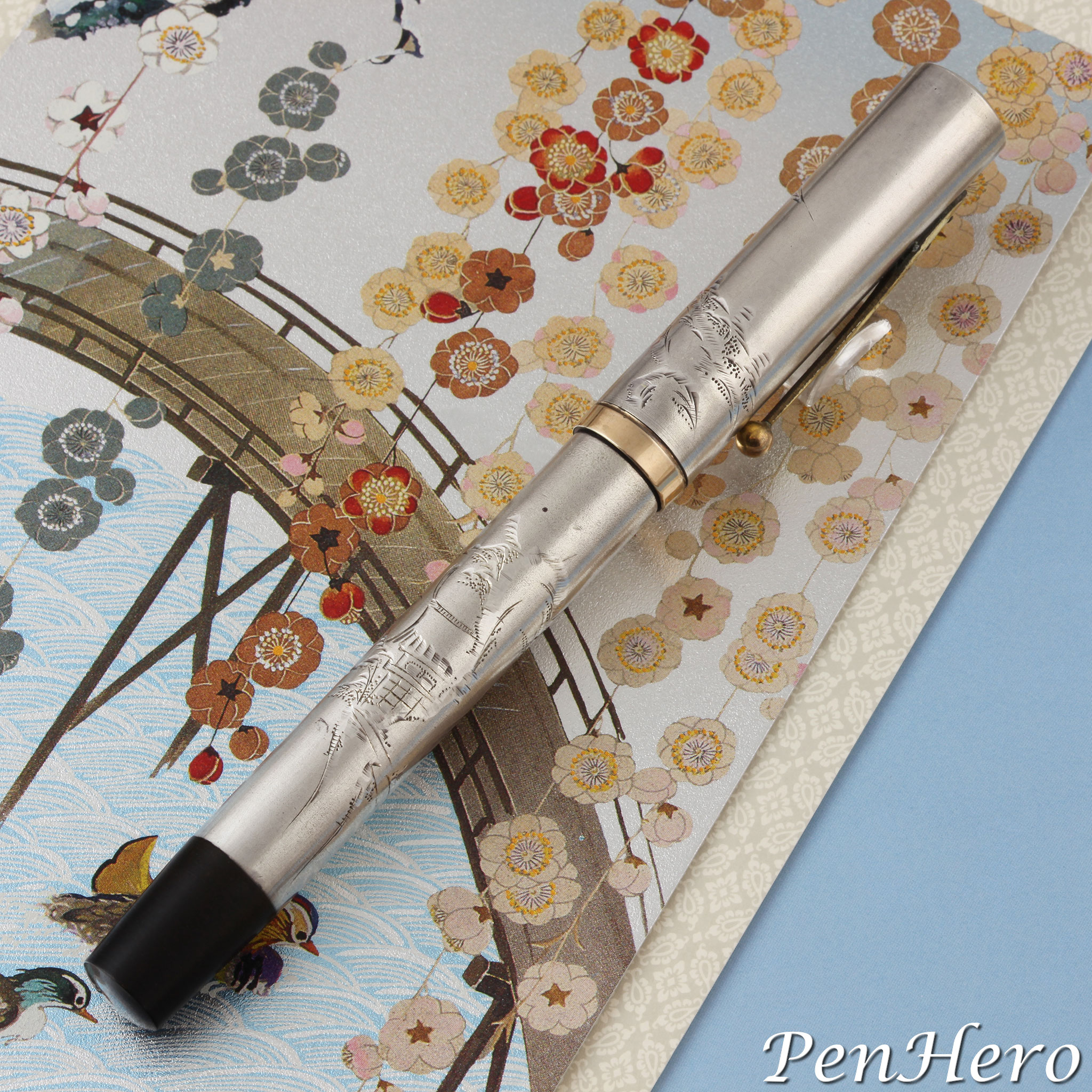 VANCO landscape engraved silver fountain pen c. 1930s
VANCO landscape engraved silver fountain pen c. 1930s
According to Fountain Pens of Japan by Andreas Lambrou and Masamichi Sunami, “There was a huge increase in the number of small pen manufacturers throughout Japan after (World War II). It seems that over 2,500 family concerns assembled pens from component parts, including gold nibs, and stamped the barrel with their own brand name.” Attrition was high and most of these small shops did not survive. “A 1953 survey of the market share in western Japan, Kyoto, Osaka, and Kobe showed Morison leading the present big-name manufacturers: Morison had 18.7 per cent, Pilot 14.6 per cent, Platinum 14.3 per cent, Push 14 per cent, Sailor 11.7 per cent. The rest of the market was shared between (sic) smaller brands such as Vanco, Seilon, Diamond, Hartman, and Elegant.” VANCO may have begun business in the 1920s, though I don’t have definite dates, and survived through at least the 1950s making eye dropper, piston, lever fill and squeeze fill fountain pens using hard rubber, silver and celluloid.
The fact that this pen has a VANCO mark on the cap top at least identifies that the company made it and sold it. I have a few VANCO advertisements, user guides and sales materials and none show this particular type. The base silver and hard rubber pen may have been a production model that was intended to be engraved, but I can’t say that this artwork was production or custom. I have seen three very similar pens with engraving by the artist Ikkou. The other two do not have VANCO marks, but side by side are similar enough to wonder if VANCO made all of them. Is it possible that he was an in-house engraver for VANCO or the Shobido Silver Store? I just don’t know. As a result, l will not be doing an identification guide and features section nor a performance section since it was only to be used for photos.
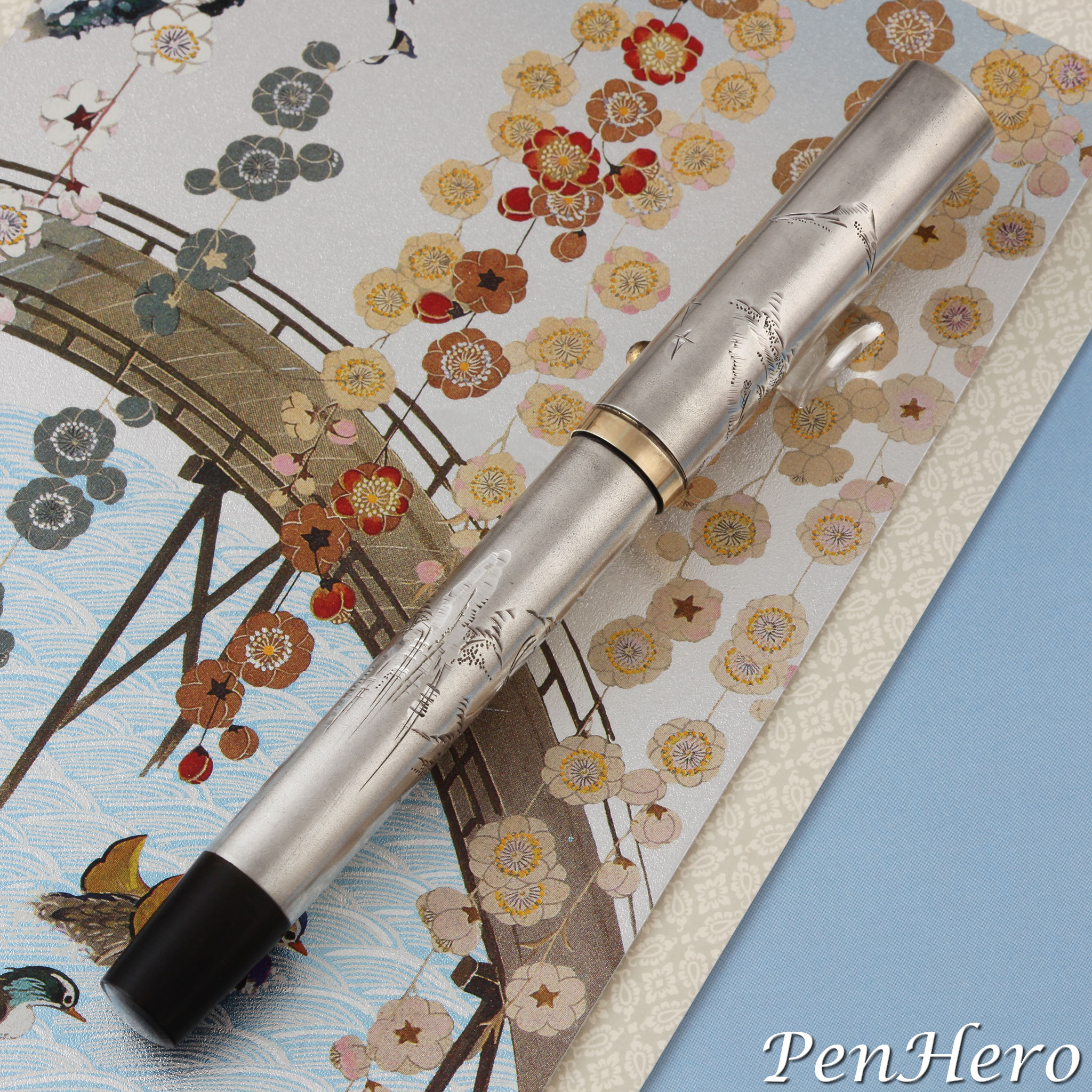 VANCO landscape engraved silver fountain pen c. 1930s
VANCO landscape engraved silver fountain pen c. 1930s
As on the other pens like this one, the fit and finish and the engraving work is excellent. The acid treatment that gives the silver a matte finish helps make the design stand out. As with many maki-e pens, this looks more like an art pen than a factory pen, but it's possible that several were made for sale to monied customers. This is a very unusual pen that would find a place of prominence in a Japanese pen collection.
References
Vanco, October 31, 2013, Crónicas Estilográficas, © Copyright 2010-2023 Bruno Taut
Duet Nib, June 5, 2016, Crónicas Estilográficas, © Copyright 2010-2023 Bruno Taut
Fountain Pens of Japan by Andreas Lambrou and Masamichi Sunami, 2012 Andreas Lambrou Publishers Ltd. Epping, Essex, UK, pages 20-22, 126, 134, and 145
Interact
Comments on this article may be sent to the author, Jim Mamoulides


